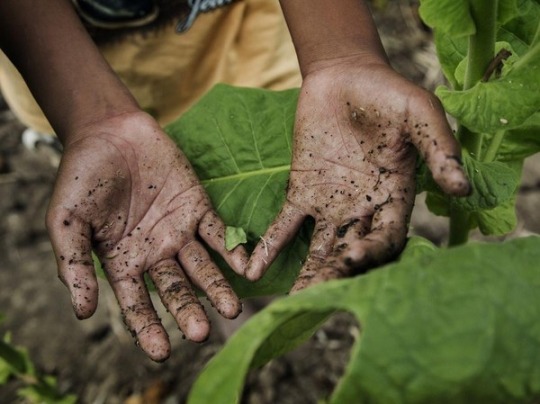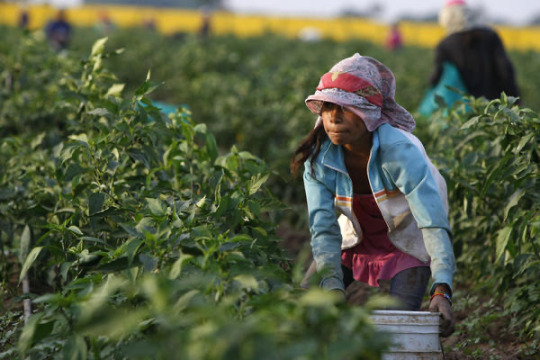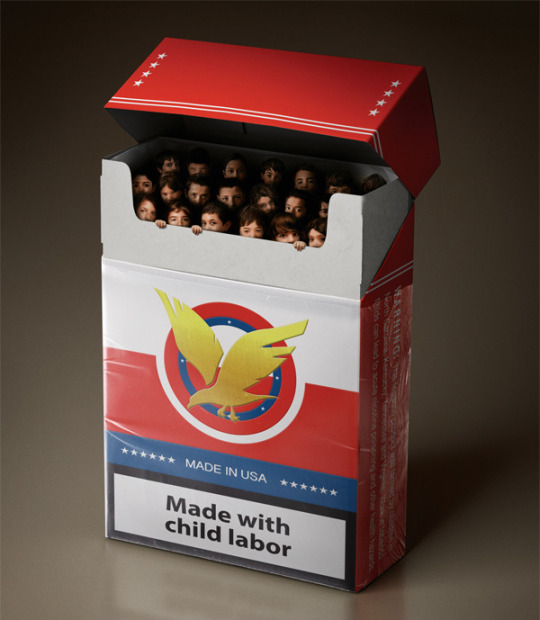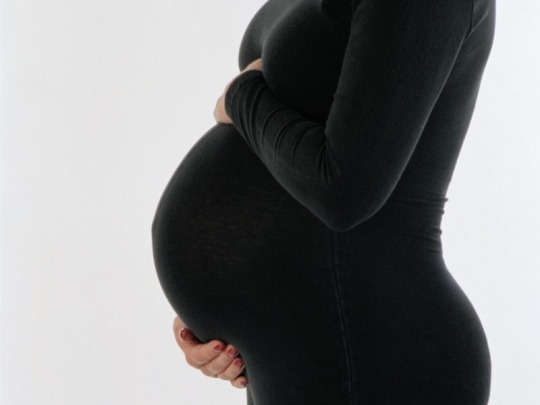Text

Lots of farms attempt to undercut employs by attempting to pay them less then minimum wage Isaac S., age 18, told the child labor colation that a tobacco grower told him and others in his work crew that they would receive the federal minimum wage of $7.25 per hour for their work on a tobacco farm, but the grower paid them only $6 per hour in cash. #childlaborinUS #USlivesmatter#issuesintheUS
0 notes
Text
Human Trafficking in the U.S.
Human Trafficking is the largest growing illegal industries. It has been estimated that human trafficking makes $150 billion dollars globally. It’s such a big business because it doesn’t matter who you are. It doesn’t matter if you are female, male, your race, your color, if you have a disability, your sexual orientation, or religion. Everyone could be vulnerable and most people don’t even know it.
Human trafficking is a serious issue that the United States that we know we face but we don’t always notice it. A lot of domestic sex trafficking that happens, happens to runaway and homeless. In a lot of those cases, they come from backgrounds with sexual and/or physical abuse, incest, poverty, or addiction. If we could be able to spot this kind of abuse earlier then we could also be getting teens off the street.
We also need to be working with our foreign allies, the people affected by human trafficking aren’t always American. It has been estimated that 50,000 people are trafficked into the United States each year. The majority of that group are being trafficked from Mexico and the Philippines. If we can stop them at their source then places like California wouldn’t be such a hot spot for human trafficking. One of the main reasons California is such a bug spot it rests on the border of Mexico so it’s the easiest way to traffick people into the United States.
Human trafficking wasn’t even something that people thought of as an issue until the 1800s during anti-slavery and anti-prostitution movements. When more people started to pay attention to human trafficking organizations fighting this injustice started to pop up. After 1970 there was an average of 3.8 organizations that were just focusing on sex trafficking alone each year. Also, the coverage on this issue started to grow. In 2000 there were only 110 articles covering the topic. In 2013 there were 3,077 articles.
We need to seek out this type of information because it will be our strongest weapon. If we know what the problem is, how it’s happening, and ideas of what we could do, then we should be doing it. We as a country need to be more proactive about learning about this kind of stuff to stop it from happing. We also need to pass more proactive laws because a sign isn’t going to do much. We need to talk to our allies and stop them from entering not only our country but every country. We can solve this problem, but only if we take the steps needed.
#issuesintheUS #Notyourproperty
Sources
“Human Trafficking.” State of California - Department of Justice - Office of the Attorney General, 1 Feb. 2019, https://oag.ca.gov/human-trafficking.
“What Is Human Trafficking?” State of California - Department of Justice - Office of the Attorney General, 27 Sept. 2017, https://oag.ca.gov/human-trafficking/what-is.
“11 Facts About Human Trafficking.” DoSomething.org, https://www.dosomething.org/us/facts/11-facts-about-human-trafficking.
Cassie, et al. “Human Trafficking in the US: Misconceptions vs. Reality.” Global Human Trafficking, 27 Mar. 2018, https://u.osu.edu/osuhtblog/2018/03/06/human-trafficking-in-the-us-misconceptions-vs-reality
0 notes
Text

As you can see this pregnant woman is tired. Just like the woman who’s husband was forcing her to work this is happening with this woman.
For more Info about this story visit
https://amp.kidspot.com.au/birth/pregnancy/real-life/my-husband-wont-let-me-take-maternity-leave/news-story/93524206543dff62799a2ab18a3b304d
0 notes
Text

Green tobacco sickness (GTS) is a type of nicotine poisoning that occurs while handling tobacco plants. Workers are at high risk for developing this illness when their clothing becomes saturated from tobacco that is wet from rain or morning dew, or perspiration. Symptoms of GTS include nausea, vomiting, dizziness, and headaches. Workers have also noted difficulty sleeping or eating. #childlaborinUS #IssuesintheUS #uslivesmatter
https://www.cdc.gov/niosh/topics/greentobaccosickness/default.html
0 notes
Text

How could this be safe? The average tobacco picker worker is exposed to thirty-six cigarets worth of nicotine in one day worth of picking tobacco. #issuesintheUS #uslivesmatter #childlaborinUS
Ariel Ramchandani ¨The Overlooked Children Working America’s Tobacco Fields¨ The Atlantic . The Atlantic publishing. 21, July 2018 https://www.theatlantic.com/family/archive/2018/06/child-labor-tobacco/562964/
0 notes
Text
My Take On Human Trafficking In America
Human Trafficking is something that I knew that happens but I didn’t know anything beyond that. I was never taught by my school or my parents about the dangers I could face and how close to home it happens. No one ever told me that I’m at an even greater risk than I realized.
I live in sunny and beautiful California. While California can be a great place to live, California is also the biggest hot spot for human trafficking in the U.S. There were 1,226 reported cases in California in 2018 alone, and there’s still more that go unreported. I’m also African-American and Black children made up 62% of minors arrested for prostitution while African-Americans only make up 13.2% of the population. The last thing that shocked me the most was that in the United States 12-14 is the average age for a teenager to enter the sex trade. There has also been a growing trend of human traffickers using social media as a tool to target people.
California claims that it is striving to stop human trafficking running rampant, but I don’t believe that what they are doing enough. So far they have amended laws that require a business to post signs/warnings. A sign shouldn’t be our only defense from a big problem. There needs to be more laws and amendments to actively stop human trafficking.
We also need to make sure that the people that are most at risk of this have tools to defend themself. High Schoolers are the ones that seem to be the most vulnerable and I think that we should start educating them about this and the risks we face. I believe that we should have a class that focuses on self-defense to protect ourselves. That class should also include how to recognize are in these types of situations. If we are given the tools to protect and detect human trafficking then there wouldn’t be as many cases and more cases would be reported.
Something that could help everyone is that there just needs to be more widespread information about this topic and how to prevent people from becoming the next victim. There is some good news, as a society, we are slowly bringing more awareness and it’s a great thing. In 2000 there were only 110 articles covering it, but in 2013 there were 3,077 articles. We just have to take that information and use it to an advantage.
#issuiesintheUS
#Notyourproperty
Sources
“California.” National Human Trafficking Hotline, https://humantraffickinghotline.org/state/california.
“Human Trafficking.” State of California - Department of Justice - Office of the Attorney General, 1 Feb. 2019, https://oag.ca.gov/human-trafficking.
“11 Facts About Human Trafficking.” DoSomething.org, https://www.dosomething.org/us/facts/11-facts-about-human-trafficking.
Bonilla, Tabitha, and Cecilia Hyunjung Mo. “The Evolution of Human Trafficking Messaging in the United States and Its Effect on Public Opinion.” Cambridge Core, Cambridge University Press, 25 Apr. 2018, https://www.cambridge.org/core/journals/journal-of-public-policy/article/evolution-of-human-trafficking-messaging-in-the-united-states-and-its-effect-on-public-opinion/E4EFA5D49DDCCC943856B8F07A899162/core-reader.
Cassie, et al. “Human Trafficking in the US: Misconceptions vs. Reality.” Global Human Trafficking, 27 Mar. 2018, https://u.osu.edu/osuhtblog/2018/03/06/human-trafficking-in-the-us-misconceptions-vs-reality
1 note
·
View note
Text

Would you still smoke willing smoke cigarettes even though 40% are made with child labor? #childlaborinUS #uslivesmatter #issuesintheUS
0 notes
Text
Why Do Kids Want to Work In These Fields?
Many children do not want to work in tobacco fields, lots of them would rather be at school learning. But these kids are forced into working these jobs, when I say forced I don’t mean physically forced but more financially forced. Lots of these kids work these jobs to make ends meet at home. An example of this is Elena G, she is a 17-year-old girl from the North Carolina area she said “With the money that I earn, I help my mom. I give her gas money. I buy food from the tobacco [work] for us to eat” (Human Rights Watch 2015). Lots of these kids Such as Elena are dreamers, meaning that their parents came to this country and brought them with them when they were at a very young age. As a result of this is that often parents are unable to get sufficient paying jobs Elena’s mom Marta F said this about her daughter working in tobacco fields. [She] had to start working, since I was alone and I didn’t have support from my partner. She had to work for herself, to buy her own school supplies….Having [her] working helps. It helps us. It helps because she buys things for the kids—clothes, shoes—for her young siblings and for school as well.” (Human Rights Watch 2015). Elena is not only supporting herself but her younger siblings and mother at the same time. Another example of a child who has had to step up and make money is Yanamaria, she is a 14-year-old worker in Kentucky, she told Human Rights Watch, “I’ve skipped school to go to work. Our house [rent payment] takes up like $600 a month, and my parents don’t get [earn] much when they’re doing [sorting] the [tobacco] leaves.”(Human Rights Watch 2015). It’s not always final reasons why a kid could have to go pick tobacco, Injuries are common in the tobacco picking industry with illness such as Heat Stroke and Green Tobacco Illness workers are often forced to take sick days when the already ran out or can’t afford to miss a day. One example of this is Adriana F, she said “I missed school to go work when my Dad popped a bone in his back and he needed me to help him,” she said. Her 17-year-old brother, Henry F., said that he occasionally skipped school in 2012 and 2013 to earn money to help his family: “I’ve missed school to work. I chose it myself. My parents always told me to go to school. But I always choose my family over everything else.” (The Guardian 2017). Lots of these kids are so selfless to the point of working hard so their family can have an easier life. #uslivesmatter #childlaborinUS
0 notes
Text
Is Picking Tobbaco Dangerous?
Picking and processing tobacco is a dangerous job. One day of picking tobacco directly is said to be equivalent to smoking thirty-six cigarettes. symptoms such as Nausea, Vomiting, Dizziness, and Lightheadedness are common in the industry. All of these symptoms are symptoms of Green Tobacco Sickness. Green Tobacco Sickness is caused by ”Nicotine exposure from handling tobacco leaves may cause nicotine poisoning, Risk of nicotine poisoning increases when the nicotine contained in the tobacco leaves mixes with rain, dew, or sweat, allowing nicotine to get onto the skin and pass into the bloodstream more easily.” (United States Department of Labor 2015). About one-quarter of workers harvesting tobacco in fields located in North Carolina suffered from Green Tobacco Sickness in a single year. Lots of kids are aware of Green Tobacco Sickness but refuse to wear protection “many kids often don't wear gloves because they tend to tear the tobacco leaves.”(NPR 2017). One result of Green Tobacco Sickness is that you are more exposed to heat Stroke which is potentially deadly. Heat Illnesses are a huge threat especially in the tobacco industry, “tobacco is cultivated in extremely hot and humid climates. Working long hours in extreme heat can place children at risk of heatstroke and dehydration, particularly if they do not drink enough water and they are wearing extra clothes to protect from sunburn and exposure to nicotine and pesticides”(Human Rights Watch 2015). Heatstroke is a potentially deadly disease in a review of heat-related fatalities among crop workers in the United States, the US Centers for Disease Control and Prevention found that from “1992 to 2006, a total of 68 crop workers died from heatstroke”(CDC 2006). There are also other dangers to working in tobacco fields Out of a group of 33 12-17-year-olds, Nearly all of the children interviewed experienced symptoms of nausea, vomiting, headaches, dizziness, skin irritation or respiratory symptoms either during or after work. Another reason why picking tobacco is so dangerous is inadequate protection and training from employers. “A handful of children said that their employers provided them with gloves or garbage bags to wear to protect themselves in the fields. No children were provided with water-resistant clothing, which is recommended by the United States Occupational Safety and Health Administration (OSHA) to protect tobacco workers from exposure to nicotine. (Human Rights Watch 2015). Corporate America needs to realize that children are children and need to be protected from the many dangers of tobacco picking. #ChildlaborUS #uslivesmatter
1 note
·
View note
Text
How is it legal to kids to work in these fields?
The reason kids are legally able to work at such a young age is due mainly to the Fair Labor Standards Act, the Fair Labor Standards Act is a law that gives workers basic rights such as minimum wage, overtime pay eligibility, and it also set the child labor standards. We need to change the Fair Labor Standards Act, this law allows the employment of children because it treats agricultural work( such as picking tobacco) differently from any other work. this allows children to be employed because when these laws were implemented in 1938 many family farms needed children to keep their small farms running due to lack of modern-day technology. But since then there has been little change to the child labor laws only changing hazardous conditions aspect, not the minimum age for employment. Due to this a child as young as 7 can work for an unrestricted number of hours, on a farm regardless of size (doesn’t have to be a family farm). at 14 the laws are loosened even more, a child can work on any farm without parental permission and still no cap on hours, In all other areas of work 16 is the standard minimum age for employment. and younger children can work only in certain jobs that aren’t deemed ¨hazarous¨. At 16, children working in agriculture can do jobs deemed “particularly hazardous”. Some examples of “particularly hazardous” jobs are Handling or using explosives; and Operating earthmoving equipment, forklift, and other heavy machinery. Several attempts have been tried to implement changes to theses laws, one of the most notable was in 2011 when the US Department of Labor proposed new regulations for its list of hazardous occupations. these new regulations would have eliminated all work in the tobacco production for children under 16 unless working at a legit family farm, but the Labor Department withdrew the proposed regulations in 2012 in response to complaints from groups representing agricultural interests. There have been some new laws implemented to try to set a minimum age for child labor in the agriculture industry. “Two of the largest tobacco growers associations in the US—the Kentucky-based Council for Burley Tobacco and the Tobacco Growers Association of North Carolina—independently issued statements calling on their member growers not to employ children under 16 in tobacco farming.” (Human Rights Watch 2015). All and all we are stepping in the right direction but need to revise the Fair Labor Standards Act’s child labor policies to protect the health, safety, and human rights of these children employed on tobacco farms. #childlaborinUS #uslivesmatter
0 notes
Text

Long standing, heavy lifting, and night work can increase a woman's risk of having a problem in her pregnancy. The risks tha the researches have found are premature babies, babies that are small for their gestational age, and high blood pressure in the mothers. Also, “the researchers, who reviewed 29 studies of the issue involving more than 160,000 working women, say their findings lend support to the need for an improved national maternity leave policy -- one that includes pay, health benefits, and job security for all” meaning that they feel as if more of this is needed and should be more understanding. For more info visit https://www.webmd.com/baby/news/20000405/pregnancy-problems-work and https://www.cdc.gov/niosh/topics/repro/physicaldemands.html
0 notes
Text

Their are many ways us human beings can help these pregnant woman. Many pregnant woman do not want to open up but a way we can help is by donating money to them because many jobs discriminate and don’t want to pay them what they should because of how slow they might be working. Keep in mind this is not their fault. There is a baby growing inside of them and we should not make them feel like they are forced to work. If you’d like to donate please visit https://www.gofundme.com/c/blog/financial-help-pregnant-women
0 notes
Text

Hard working, pregnant woman. These woman are being forced to work while having a human being inside of them and this is because of low pay that they get. They need special accommodations but cannot get them because they need to provide for their families. For more info visit https://amp.theguardian.com/women-in-leadership/2015/jul/27/maternity-leave-discrimination-pregnant-then-screwed-stories.
0 notes
Text
Human Trafficking In America
Human trafficking in today’s world is modern-day slavery and it’s one of the biggest growing illegal industries with an estimated to make 150 billion globally. Even though it’s a topic that is becoming a bigger and bigger problem in America it is not something that is widely talked about like other issues like using child labor. It wasn’t even brought to the publics’ attention until the 1800s during anti-slavery and anti-prostitution movements. With what little information the public might know could actually be misconceptions.
Most of the domestic human trafficking is of homeless or runaway youth. They usually have backgrounds including sexual and/or physical abuse, incest, poverty, or addiction. California reported 375 cases of underage trafficking with most trafficked girls entry around that age of 12-14 in the United States. It has also been reported that young girls and women to make up 98% of human trafficking as a whole.
In modern-day movies, it gives the audience the impression that human trafficking happens to upper-class white women are targeted and it only happens overseas. What is being shown is just not an acuate representation of what actually happens. It is a big issue that the U.S struggles with and happens more often then we are lead to believe. Black children make up 62% of minors arrested while African-Americans only make up 13.2% of the population. This shows up that people of color are the most affected by this issue.
There are some good steps that are being taken to prevent this from happening to more people. California is putting laws in place to make people more aware of this issue. They amended a law so it now requires a business to post a notice. This is not the only way that human trafficking happens. There as been a growing trend of human traffickers using social media platforms to reach a wider audience. Their goal is to recruit, advertise, and target human trafficking.
The best defense against human trafficking is being aware of the problem. If you know that the problem exists then you can take steps to prevent you or friends from becoming the next victims. If you arm yourself with information you could stop this from happening ever again.
#issuiesintheUS #Notyourproperty
Sources
“11 Facts About Human Trafficking.” DoSomething.org, https://www.dosomething.org/us/facts/11-facts-about-human-trafficking.
Bonilla, Tabitha, and Cecilia Hyunjung Mo. “The Evolution of Human Trafficking Messaging in the United States and Its Effect on Public Opinion.” Cambridge Core, Cambridge University Press, 25 Apr. 2018, https://www.cambridge.org/core/journals/journal-of-public-policy/article/evolution-of-human-trafficking-messaging-in-the-united-states-and-its-effect-on-public-opinion/E4EFA5D49DDCCC943856B8F07A899162/core-reader.
“California.” National Human Trafficking Hotline, https://humantraffickinghotline.org/state/california.
Cassie, et al. “Human Trafficking in the US: Misconceptions vs. Reality.” Global Human Trafficking, 27 Mar. 2018, https://u.osu.edu/osuhtblog/2018/03/06/human-trafficking-in-the-us-misconceptions-vs-reality/.
“Human Trafficking.” State of California - Department of Justice - Office of the Attorney General, 1 Feb. 2019, https://oag.ca.gov/human-trafficking.
“What Is Human Trafficking?” State of California - Department of Justice - Office of the Attorney General, 27 Sept. 2017, https://oag.ca.gov/human-trafficking/what-is
1 note
·
View note